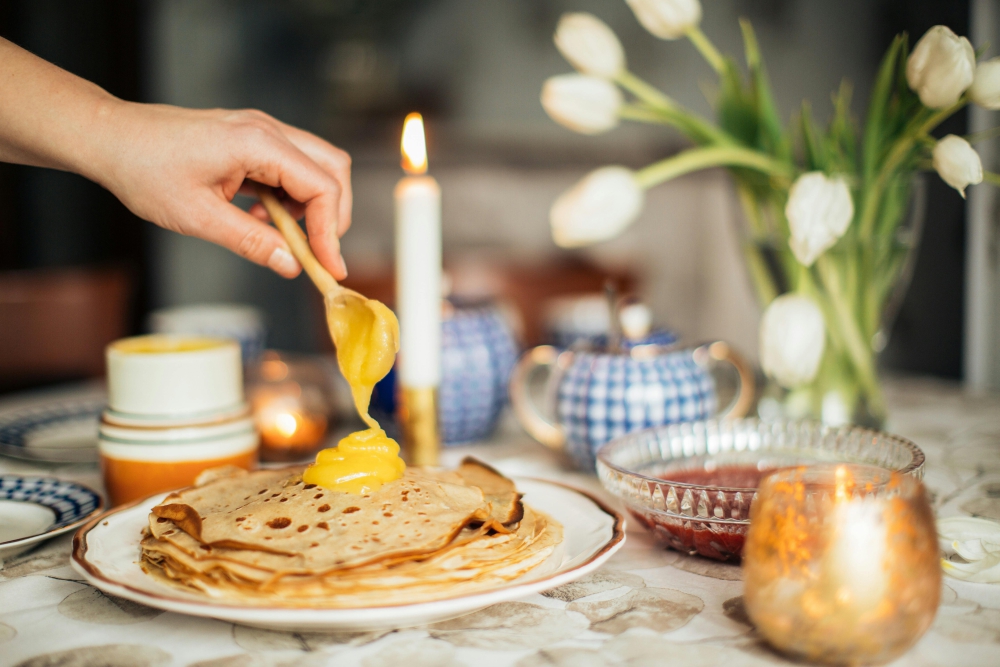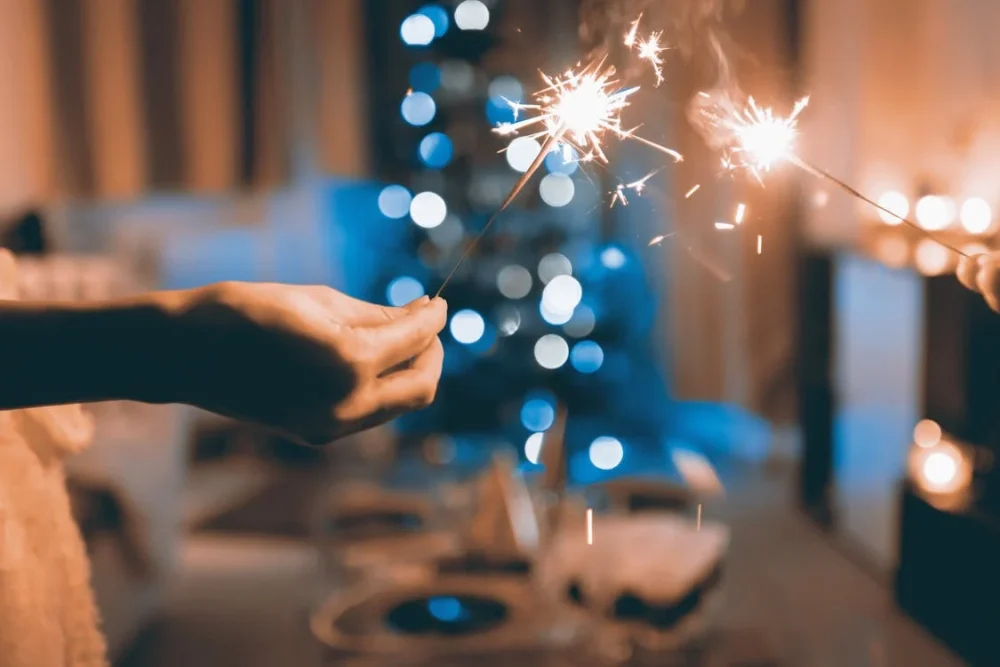Opinion Piece: ‘Tis the Season for Speculaas and Sinterklaas
By Jesica Cooray
Autumn is slowly turning into winter, and our heaters are kicking in — or maybe they have already been on full blast for a few weeks, depending on who won the temperature debate in your house. Although winter brings the cold and fog, it also means that the holiday season is right around the corner, and the city is about to get a lot prettier with twinkling lights and holiday markets.
From chocolate letters in shoes to someone that looks like Santa Claus sailing on a boat, the Netherlands has many traditions you might want to know more about, whether it be your first winter and holiday season in the Netherlands or even if you’ve lived here for some time. Fear not; this year, you’ll be prepared! I’ll cover the main traditions, important dates, and culture shocks I had as an international during my first Dutch holiday season.
Sint Maarten – 11 November
When I first experienced Sint Maarten, I thought my neighbors had gotten Halloween mixed up, just a few weeks late. But it wasn’t quite Halloween—there were no costumes, but instead, children walked around with homemade lanterns and sang songs for treats at the end of their performance.
The custom originated from Saint Martin of Tours, a saint known for his generosity, famously sharing his cloak with a beggar. It is also associated with saying farewell to autumn and embracing the winter season to come. Although the tradition is not common all over the Netherlands anymore, it is still widely celebrated in the North.
I love seeing how excited children get for this holiday—the effort they put into making lanterns, and the stage fright many overcome to sing for you. Plus, it’s an excellent way to enjoy a bit of “Halloween” in the neighborhood since the Dutch don’t tend to celebrate that. Most stores sell bite-sized versions of popular candy specifically for this holiday, so make sure you have some candy stocked up before Sint Maarten for the children who may come knocking!

Sint Pannekoek – 29 November
A Dutch tradition that you might have not heard about is Sint Pannekoek—I only learned about it last week. But a holiday celebrating pancakes? count me in! Sint Pannekoek is celebrated on November 29, originating from a 1986 comic by Jan Kruis. The holiday involves wearing a pancake on your head, eating pancakes and cheerfully wishing others a “Happy Sint Pannekoek!” This custom started in Rotterdam and has now become a tradition across the Netherlands.
If you, like me, have not celebrated it, you are in luck because the IWCN along with the Humanitas Café will be hosting a Sint Pannekoek gathering on 29 November. Make sure to sign up and join in on the fun.
Sinterklaas – 5 December
Now let’s talk about Sinterklaas, the man who sails in from Spain each year—a surprise to my Spanish friends who’ve never heard of him! Known as Saint Nicholas, he is the Dutch version of Santa Claus.
In mid-November two weeks before his birthday, Sinterklaas arrives to the Netherlands visiting many Dutch cities on his horse Ozosnel (Oh so fast) and with his helpers known as Zwarte Piet (Black Pete, a topic I will get back to later), now more commonly referred to as Pieten. Together, they deliver small gifts and chocolate letters in children’s shoes left by the fireplace in the days leading up to 5 December. Many supermarkets and shops also encourage children to leave their shoes there on specific dates, and treats magically appear the next day.
The celebrations come to an end with Pakjesavond (Gift Eve). On Pakjesavond, Sinterklaas leaves behind presents for everyone. Usually, there will be a knock at the door, indicating Sinterklaas and the Pieten just delivered the gifts. Sometimes they even throw in some kruidnoten through the doorway. When you’re older, usually you take up the roll to give gifts from Sinterklaas. Then gifts are often hidden inside what is known as a suprise (surprise package), for example, jewelry hidden inside a home-made box shaped like a laptop. These are often accompanied by a humorous poem about the person receiving the gift.
Getting back to Zwarte Piet, one of the more controversial parts of Sinterklaas. Until recently, Piet was traditionally presented with a fully blackened face, explained as “soot from the chimneys” they climb through to deliver the gifts. However, this portrayal has raised cultural concerns about blackface. While some explain it as a tradition rooted in innocence, many communities are now evolving the custom to have Piet with lighter, soot-brushed faces, signaling positive change toward a more inclusive celebration. In recent years, Roetveegpiet (Sooty Pete) has become the norm in most public Sinterklaas celebrations.
I love the unique traditions that make Sinterklaas so enjoyable—from the suprises to the personalized poems that accompany them. And the sweet treats are like something out of Charlie and The Chocolate Factory: kruidnoten (spiced cookies), speculaas, marzipan, chocolate letters, chocolate coins, taai-taai, and the list goes on.
Christmas – 25 & 26 December
I adore Christmas, and the Dutch celebrate it for not one but two days! One of the Christmas days is usually spent with close and immediate family, whereas the other Christmas day is spent with extended family or friends. Since both Christmas and Sinterklaas fall in December, many families try to navigate Christmas differently, depending on budgets. This is why many Christmas traditions are almost always dependent on how families like to celebrate them. For example, many families only give gifts on either Sinterklaas or Christmas and if there are young children, this holiday is more likely to be Sinterklaas. When you’re older, most families buy all immediate family a small gift or they do lootjestrekken (lit pulling lottery tickets, similar to Secret Santa). There are also some families that give gifts during both Sinterklaas and Christmas.
For Christmas, the Dutch like to come together for a big meal. However, when there’s not someone offering to cook the big feast, most Dutch people will gourmet together. Gourmet (table grilling) with vegetables and meats to grill on the gourmet with slaatje (salad), baguettes, and dips on the side. It’s a gezellig (cosy) way to cook together and enjoy some quality time. Supermarkets like Albert Heijn also always have a seasonal Christmas meal section with fancy dishes, and many of them do not disappoint.

New Year’s Eve and Day – 31 December & 1 January
Oud en Nieuw (lit. old and new) is a time when friends and family gather to toast the end of another year. On Oudejaarsavond (lit. old year’s eve) traditional new year’s treats such as oliebollen, vegter’s-rolletjes, and appelbeignets are served. Although typical Dutch cuisine can be bland to most internationals, they really know what they’re doing with baked goods, and their new year’s treats definitely prove this to be true!
At midnight, although you’ll hear them building up throughout the day, the fireworks officially go out in full blast and the champagne (or bubbels) flows. The fireworks can be a little scary, especially if it is your first time, as some civilians take their firework show to the next level and some even travel across the border and spend a lot of money to buy specific fireworks.
My first new year’s, I was oblivious and went outside, and I felt like I was witnessing the purge but with pyrotechnics. Safe to say, I do not recommend going outside. If you have pets, try to create a calm space for them—it can be really disorienting for animals. Staying with them can help them feel more secure. Cats and rabbits, in particular, often need a cozy hiding spot where they can retreat if the noise becomes too overwhelming.
In recent years, the government has taken measures to control the chaos by having city-organized firework shows, which lead to fewer accidents and a more enjoyable evening.
The Dutch holiday season truly has something for everyone to enjoy. If you’re celebrating away from home, consider blending your own traditions with those of your Dutch friends and family; it’s a great way to make the season even more festive. The more, the merrier!
